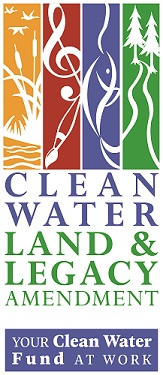Clean Water Fund: Contaminants of Emerging Concern (CEC)
MDH Legacy Initiatives
- Clean Water Fund Home
- Contaminants of
Emerging Concern - Groundwater Protection Initiative - Accelerated Implementation Grant
- Groundwater Restoration and Protection Strategies (GRAPS)
- Pathogen Project
- Private Well Protection
- Source Water Protection Planning and Grants
- Water Reuse
Related Topics
Environmental Health Division
Contaminants of Emerging Concern (CEC) Initiative
Clean Water Fund

 MDH’s CEC Initiative prioritizes chemicals that have been found or are likely to be found in Minnesota drinking water and have little or no information available about human health risk. The CEC Initiative allows MDH to take a proactive approach to the protection of drinking water by considering contaminants that:
MDH’s CEC Initiative prioritizes chemicals that have been found or are likely to be found in Minnesota drinking water and have little or no information available about human health risk. The CEC Initiative allows MDH to take a proactive approach to the protection of drinking water by considering contaminants that:
- have been found in groundwater, surface water, or soil; or
- have not been found in Minnesota but have the potential to enter our waters.
The work of this initiative helps MDH understand the potential health effects of these contaminants. Because pollutants have no boundaries and preventing chemicals from getting into our drinking water can't be done by state agencies alone, the CEC Initiative also shares findings about CECs with individuals and groups inside and outside of state government.
The CEC Initiative is funded by the Clean Water Fund. Prior to the Clean Water Fund support, MDH was only able to develop human health-based guidance for contaminants that were already found in groundwater in Minnesota. The CEC Initiative has three main areas of work:
- CEC Nomination and Selection (See Nominate Contaminants)
- Contaminant Evaluation and Review
- CEC Special Projects
Annual CEC meeting
CEC Annual Meeting webinar: Thursday, Sept. 18
The Health Risk Assessment (HRA) Unit at the Minnesota Department of Health (MDH) held its annual Contaminants of Emerging Concern (CEC) Meeting on Thursday, Sept. 18. The summary slides from the presentation are available below.
CEC 2025 Annual Meeting Summary Slides (PDF)
Nominate contaminants for the CEC program
The CEC team welcomes nominations of contaminants of emerging concern. You may nominate contaminants using the nomination form.
A table of the Nominated Contaminants Status and Information (PDF) is available from the Nominate Contaminants page.
Contaminant Evaluation and Review
MDH staff research where and how a contaminant is used in the state, its potential to enter Minnesota waters, and its toxicity to humans. If there is sufficient information on health effects, staff calculate health-based water guidance - a concentration of contaminant in water that poses little or no health risk to people drinking that water. For some contaminants, the information is too limited. In this case, the guidance may describe the hazard posed by the chemical instead of a certain level in water.
Reviews of chemicals consist of:
- an exposure review, documenting the typical uses of the chemical and where releases are likely to occur (in coordination with the Minnesota Pollution Control Agency (MPCA), the Minnesota Department of Agriculture (MDA), and other parties with access to relevant information); and
- a toxicological review, providing the most current information on the adverse health effects from exposure to the chemical. Refer to the Health-Based Guidance Development Process web page for more information on guidance development.
2025 Contaminants Under Review:
See Chemicals Under Review for current reviews by the Contaminants of Emerging Concern Initiative.
2025 CEC Initiative Workplan
- Trifluoroacetate (TFA)
- Cobalt
- o-toluidine
- Germanium
- 5,6-Dimethyl-1-H-Benzotriazole
- Four Nonylphenols: (NP2EO, NP1EO, NP2EC, NP3EC)
- Nodularin
- Metformin
Completed in 2025:
Completed in 2024:
Subscribe to GovDelivery to stay up to date with CEC Initiative activities.